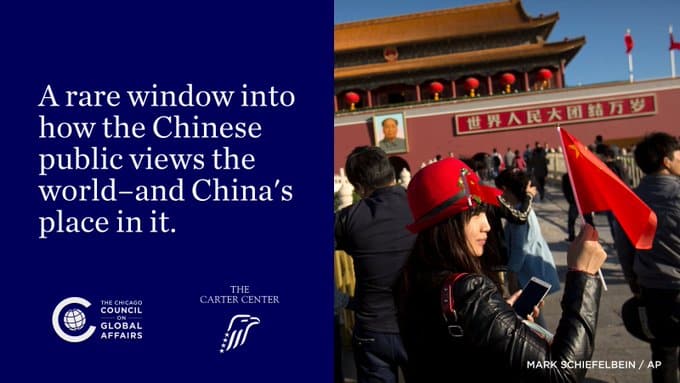Rescind China’s Invitation to Join RIMPAC 2016 Before It’s Too Late
Hawaii’s Rep. Mark Takai has objected to China’s participation at the 2016 Rim of the Pacific (RIMPAC) exercise based at Pearl Harbor. Takai also would amend the FY 2017 National Defense Authorization Act (NDAA) to bar China if its invitation is not revoked by the Pentagon. The Obama Administration should rescind the conditional invitation for the PLA to join RIMPAC 2016.
While the Navy’s Third Fleet in San Diego technically invites foreign navies to RIMPAC, the review of whether to include China’s People’s Liberation Army (PLA) Navy reflects the views of PACOM, the Navy, the Pentagon, and the White House. PLA presence at the premier maritime warfare exercise remains sensitive, because of concerns about protecting U.S. and allied technology, tactics, techniques, and procedures; preventing disclosure of defense articles and services; complying with U.S. laws; and including China but excluding Taiwan despite U.S. assistance to Taiwan against China’s threats.
As Takai pointed out, China’s behavior in the South China Sea is the “polar opposite of U.S. objectives” and entertaining the PLA at RIMPAC would reward China for bad behavior. China has faced little cost for bad behavior that is wide-ranging, including the PLA’s cyber-enabled theft of U.S. economic secrets and declaration of an “East China Sea Air Defense Identification Zone (ADIZ)” in 2013 to attempt to nationalize international airspace over that sea. Concerns are rising about China’s future claim of a similarly restrictive and threatening “South China Sea ADIZ.” RIMPAC would legitimize and help the PLA in exercises aimed to help and reassure allies and partners, some facing China’s menace.
Appearing before the Senate Armed Services Committee in September of last year, PACOM head Adm. Harry Harris warned about the dangers of China’s behavior. Two days before Harris’ testimony, two PLA aircraft intercepted, in an unsafe manner, a U.S. RC-135 over the Yellow Sea. This incident occurred after a PLA fighter’s dangerous intercept of a U.S. P-8 aircraft in August 2014.
Secretary of Defense Ashton Carter testified at a Mar. 22 hearing of House Armed Services Committee that the Defense Department continues to review the offer to the PLA to participate in RIMPAC this summer. Nonetheless, Carter argued that the United States does not want to exclude anyone from the regional “security architecture.”
The issue is not exclusion, however. The administration does not include Taiwan and disinvited Thailand in the past. The U.S. engages with select allies and partners, ranging from intelligence-sharing to wargames. China does not enjoy access to many U.S. military operations due to concerns about defense, counter-intelligence, and the law. Sanctions imposed after the Tiananmen crackdown of 1989 prohibit arms sales to China. China simply is not in alignment with U.S. and allied security interests and does not play by the same international rules. At a meeting of defense ministers in Singapore last May, Carter warned that, in the South China Sea, “China is out of step with both the international rules and norms that underscore the Asia Pacific’s security architecture, and the regional consensus that favors diplomacy and opposes coercion.” China’s actions undermine security. As a result, China marginalizes itself.
The Obama administration has attempted in good faith to bring China into the regional order, even inviting the PLA to participate at RIMPAC 2014. The gamble has not paid off. Despite some improvement in tactical navy-to-navy coordination, Beijing’s behavior has worsened; China has been building man-made “islands” in the South China Sea. China continues to depict its “nine-dash line” as an egregious “national border” in maps of the South China Sea.
Secretary Carter warned at the hearing in March that no country should be militarizing features in that sea and criticized China’s “aggressive militarization” there. He has repeatedly declared that, “make no mistake, the United States will fly, sail, and operate wherever international law allows, as we do around the world, and the South China Sea will not be an exception.” The U.S. Navy conducts Freedom of Navigation (FON) operations to counter China’s excessive claims.
It is time for the administration to heed Congress, send a smart message to China, and stop the mixed signals by precluding the PLA’s participation at RIMPAC 2016. Instead of “doubling-down” on the past gamble, it is time to be strong and proactive amid rising danger.
There are many reasons to exclude China. Precluding PLA participation at RIMPAC would ensure that limited financial and other resources are focused on allies and partners, and are not diverted to benefit China.
Protecting RIMPAC’s integrity ensures compliance with laws. Congress passed legislation to stop the U.S. military from helping the PLA develop warfighting capabilities. The FY2000 NDAA, P.L. 106-65, prohibits the Secretary of Defense from authorizing any military contact with the PLA if that contact would “create a national security risk due to an inappropriate exposure” of the PLA to any of the following 12 operational areas: force projection operations; nuclear operations; advanced combined-arms and joint combat operations; advanced logistical operations; chemical and biological defense and other capabilities related to weapons of mass destruction; surveillance and reconnaissance operations; joint warfighting experiments and other activities related to transformations in warfare; military space operations; other advanced capabilities of the Armed Forces; arms sales or military-related technology transfers; release of classified or restricted information; and access to a Defense Department laboratory. The law allows only two exceptions: search and rescue or humanitarian operations or exercises.
A U.S. decision to exclude China will also demonstrate leadership to other countries. RIMPAC isn’t just a US-led exercise; it is also a prestigious presentation of policy to allies using similar technology and training. Credibility and consistency are required if U.S. officials are to complain when countries consider unwise “third-party transfers” or military access that enhance the PLA.
Moreover, a strategic message affecting RIMPAC has consequences, because the PLA values US-led exercises. The PLA has placed priority on RIMPAC because it not only wants more exposure to U.S. equipment but also the superior and adaptive training, knowledge, and combat experience of U.S. personnel. China’s Defense White Paper of 2013 acknowledged the use of combined exercises with foreign militaries to “accelerate” the PLA’s modernization. Also in 2013, the Defense Department warned in an annual report to Congress that PLA participation or observer status in the exercises of militaries with U.S. equipment, systems, and weapons could have unintended consequences that result in the unauthorized disclosure of defense articles, technical data, or defense services to China. One indication ofRIMPAC’s importance to the PLA: when President Obama released long-overdue notifications to Congress on arms sales to Taiwan last December, the PLA did not protest by spurning RIMPAC.
The U.S. had relaxed policy to allow the PLA to observe RIMPAC, but not participate. In June 2012, the PLA questioned visiting PACOM Commander Adm. Samuel Locklear about why the PLA Navy was not invited to RIMPAC 2012. In fact, some of the resistance stemmed from U.S. laws. Nevertheless, without consulting Congress, then-Defense Secretary Leon Panetta announced an invitation for the PLA Navy to participate in (not just observe) RIMPAC 2014.
While restricting access, the U.S. Navy allowed the PLA Navy to join five warfare areas of RIMPAC 2014: drills on surface warfare; counter-piracy; humanitarian assistance/disaster relief and military medicine; search and rescue; and salvage involving explosive ordnance disposal.
Officially, the PLA sent four ships (destroyer, frigate, oiler, hospital ship). The persistent, pushy requests from the PLA for access to U.S. training or equipment included training in opposed boarding of a ship (dropping forces from a helicopter), which was denied.
Despite being invited to participate, the PLA still dispatched an auxiliary general intelligence (AGI) ship to spy in Hawaii’s Exclusive Economic Zone (EEZ). The PLA sent an AGI ship to the EEZ of Guam during the Valiant Shield 2014 exercise.
The United States needs to show strength with strategic signals, serious actions, and international leadership. The United States will look silly and weak after RIMPAC 2016 if the PLA is embraced only to have the regime in Beijing then claim a “South China Sea ADIZ,” coerce a U.S. ally, or provoke collisions with U.S. or allied aircraft and ships.
Shirley Kan ([email protected]) is a retired specialist in the U.S. government, who worked for Congress at the Congressional Research Service (CRS). This article was originally published by Pacific Forum CSIS PacNet here, and represents the views of the respective author.
By SHIRLEY KAN Apr. 20, 2016 on The Diplomat
Read more here








